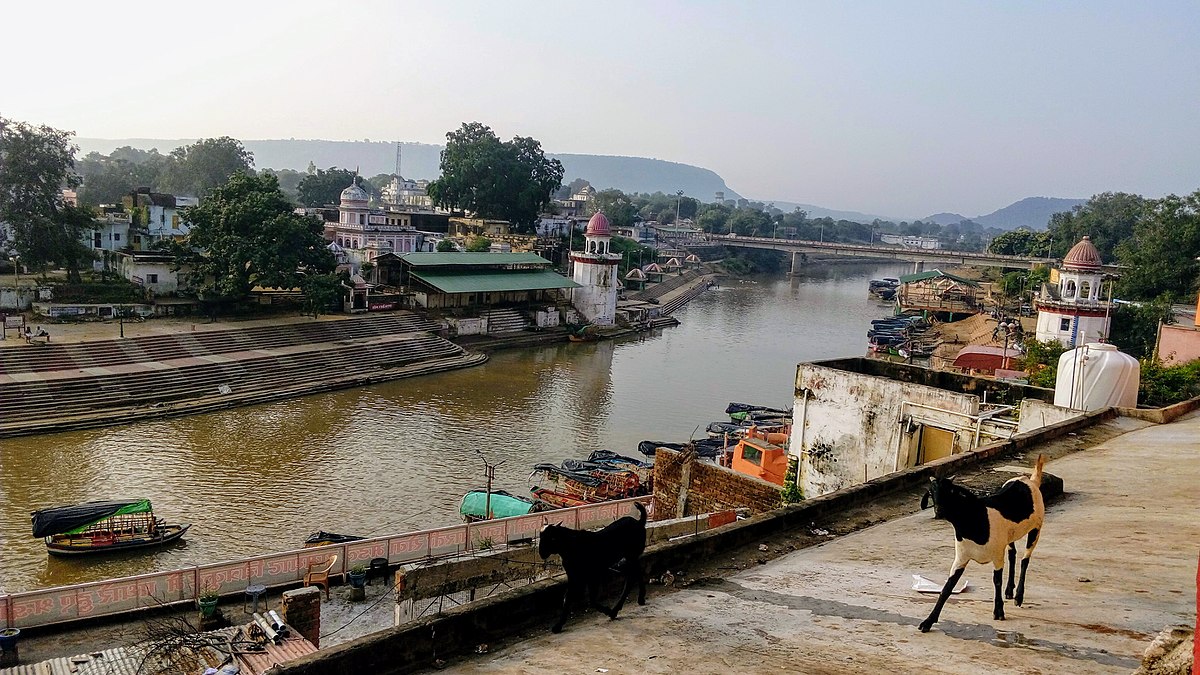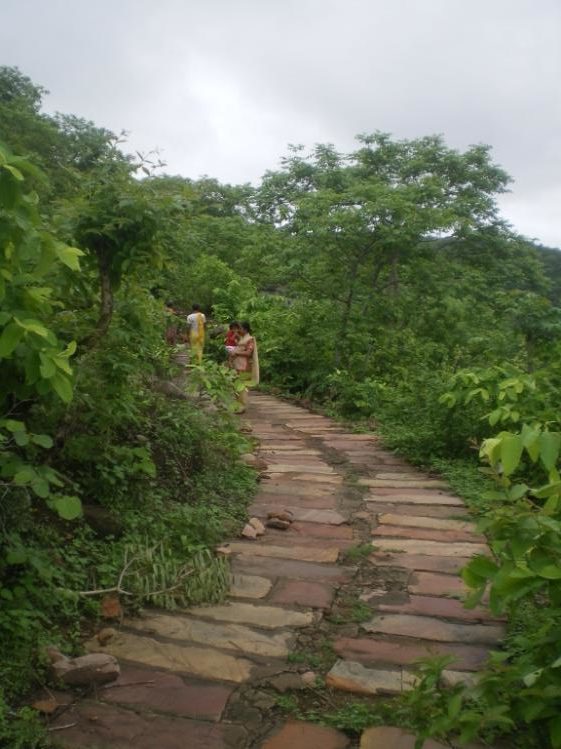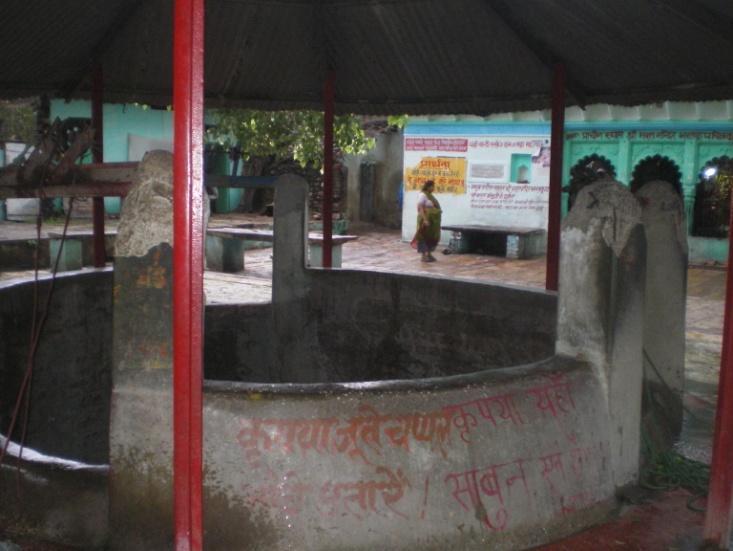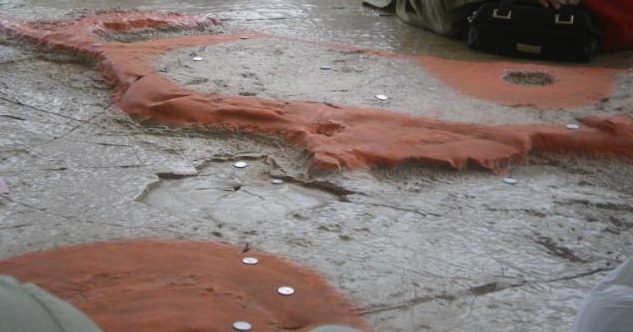
The territory of the saints of the Vaishnava sampradaya; the land where mother nature still blossoms in youth; the home of the pious souls, where the breeze rejuvenates the soul, the aroma refreshes the mind and the flora and fauna appear celestial; the region that attracted the all-attractive Lord Ramachandra; the land that has been described by the various scriptures, all these sum up to describe only one place – Chitrakoot. The area of Chitrakoot spreads through two states in India – Uttar Pradesh and Madhya Pradesh. It is located in the Satna district of Madhya Pradesh and Chitrakoot district of Uttar Pradesh. This vicinity has been one of the spiritual hubs of India from time immemorial. All the aspects of spirituality are still predominantly visible here even today. Adorned with the hermitages of the great sages, this wonderful region is one of the vividly described places by the Vedic scriptures.

In this travelogue I have described the various sacred spots in Chitrakoot in relation to Sri Ramachandra’s exile. Reference to various places have been mentioned from Goswami Tulsidas’ Ramacharitamanasa and other scriptures. It is very clear that a holy place like Chitrakoot cannot be described fully by words. However, with the aim of reviving memories of devotees who have visited the site and to increase the desire of those devotees who have not yet been there, we have penned a few words.
The name of this town refers to the predominance of hills here. Chitra means amazing and koota means cliff. This is the land of amazing cliffs of the Vindhya Hills range. Saint Goswami Tulsidas describes the glories of Chitrakoot as follows:
shaila himachala adik jete, chitrakuta jasu gavata tete
mahima kahiya kavana bidhi tasu, sukha sagara jaha kinha nivasu
“Even the great mountains like the Himalayas and others sing the glories of Chitrakoot. How can the grandeur of that place be described fully, for the ocean of pleasure Sri Ramachandra resided there.”
(Ramacharitamanasa, Ayodhya Kand, Doha 137 and 138)
As one approaches the divine land, lush greenery, attractive hills and appealing forests come forth as if they are welcoming the pilgrims to the holy site. Rain-filled clouds laden on the hills give such a natural and fascinating scene. Temples atop these hills look to be very peaceful, away from the hassles of this fast-paced modern world. When Lord Ramachandra came here, Chitrakoot was so appealing that the comforts of the palace had no match for it. Such is the splendor of Chitrakoot that, the Lord decided to make it His abode and thus enhanced its glories to boundless limits.
Janaki Kund
Our journey begins at Janaki Kund. This is the pond where mother Sita often had bath. An extraordinary feature is that the river Mandakini flows over the pond covering it fully. Conclusively, the spot appears to be a simple stream of the river. The pure and the charming waters of the revered Mandakini, embedded with dense forestry on its banks cleanly give a glimpse of the nature back in Treta-yuga. Saints say that mother Sita’s footprints are still visible in this area.
Gupt Godavari
Gupt Godavari is one of the most adventurous sites of the town. Gupt literally means hidden. As the name suggests, this is place where mother Godavari secretively appeared in Chitrakoot for the pleasure of Sri Ramachandra. There are two caves here. Sri Ramachandra along with mother Sita and His younger brother Lakshmana resided in the smaller cave during the rainy seasons. This cave is quite spacious and comfortable inside. The Dhanush kund is a small pond in the interior of the cave. Another feature which is witnessed inside the small cave is the ‘khat-khata chor’. As per the legend of the place, once during the night, mother Sita was resting on a raised rock. A thief entered the cave during these hours and stole the anklets of Sita Devi. As he was trying to escape, he was caught by Lakshmana who was sitting on guard. As a punishment, Lakshmana forced the thief to permanently reside inside this cave. Till today, a small rock makes a clanking sound of ‘khat khat’ sometimes at the place where the thief was punished. Hence the name of the rock is khat khata chor.
After observing the small cave, be prepared to enter the larger cave. It is in the extreme interior of this cave that mother Godavari appears in the form of a stream. The journey through this cave is extremely difficult and daring, thus the inhabitants of this area caution all the pilgrims as they enter here. The cave is relatively dark, with the waters of Godavari river flowing to the hip-level during rainy seasons. Due to the water flowing from all directions, the path below is not visible at all. The rocks of the cave sometimes extend so much that the path left to walk is only about 20 centimeters. The path is very rocky and uneven, and thus cannot be seen through the flowing river. It was impossible to carry any gadgets in our hands, no photographs could be taken inside here. Inside the cave, it seems to be a mission to take care of oneself also! Thus one can only complete this journey with the mercy of Sri Raghunandana. These sacred sites revitalize one’s spiritual senses. A mere sight of these spots fills the heart with immense contentment. The reason of these effects has been clarified by Saint Tulsidas as follows:
chitrakuta ke bihaga mriga beli bitapa trina jati punya punja saba dhanya asa kahahi deva dina rati
“The devatas venerate Chitrakoot day and night by saying that the birds, animals, trees, creepers and even the straws of this site are personifications of piousness.” (Ramacharitamanasa Ayodhyakand doha 138)
Atri Muni’s Ashrama
Atri ashrama, the ancient residence of Maharishi Atri, is also a widely visited site. Sri Ramachandra came to this place during his exile and a wonderful conversation took place between mother Sita and Sage Atri’s wife Anasuya Devi. It is at this spot that river Mandakini, a stream of river Ganga manifested as a result of Anasuya Devi’s severe austerities and penance. One can see the Mandakini river emerging from here.
Kamad Giri – the wish fulfilling hill
This is the most beautiful and charming of all the hills in Chitrakoot. Sri Rama resided along the pleasant valleys of this hill. There are many areas in these valleys which symbolize the various activities performed by the Lord. Bharata Milap is the place where Sri Bharata and Sri Ramachandra had a wonderful meeting in the forest. The footprints of the two Lords facing each other are still visible at this point. Another place of interest along Sri Kamad Giri is Ramashayya. Lord Rama often used to rest on a horizontally oriented rock at this place. The symbols of Him lying down on it can be seen on the Ramashayya rock to date.
Kamad Giri is revered and worshipped among the Sri sampradaya Vaishnavas (Ramanandis) of North India. It is praised as the serene abode of Lord Rama, the best of hills in the Vindhya range. Devotees pay respect in many ways. A relaxed circumambulation of Kamad Giri is done by many pilgrims. The path is made very unperturbed with shades and marble floors in some areas. The total distance of circumambulation comes to around nine kilometers.
We were very fortunate to complete the circumambulation during the night hours as the kind clouds kept us refreshed with drizzles through the entire path.
Bharata Kup
When Sri Bharata came to the forest from Ayodhya to take back his brother Sri Rama, he had brought with him the waters of all the holy rivers. It was intended that Sri Ramachandra would be crowned as the King in the forest itself. And thereafter, everyone would return to Ayodhya. The waters of the holy rivers were to be used for the crowning ceremony. After generous and loving discussions that took place in the forest, Sri Rama promises Bharata that He would accept the Kingdom, but only after fourteen years of exile are over. Sri Bharata returned to Ayodhya with the footwear of the Lord. The holy waters that were carried for the ceremony were deposited by Sri Bharata in a well in Chitrakoot. Henceforth, this well came to be known as Bharata Koop, which literally means Bharata’s well. The water in this well is considered extremely holy and is relished by hundreds of devotees. Bharata Koop has been well praised by Goswami Tulsidas as follows –
bharatakupa aba kahihahi loga, ati pavana tiratha jala joga
prema sanema nimajjata prani, hohihahi bimala karama mana bani (Ayodhya Kand, Doha 309)

Maharishi Atri says the following about Bharata Koop
“This well shall be known as Bharata koop from now. The waters contained in it are extremely sanctifying and the well itself is a place of pilgrimage. The people who accept these waters with utmost love, will be purified in deed, mind and word.”
Hanuman Dhara
Hanuman Dhara is another spiritually adventurous site where devotees go. It is said that after annihilating Lanka by burning it with his tail, a persistent temperature remained in Lord Hanuman’s body. Lord Ramachandra created this stream flowing from the hills for the benefit of Hanuman. This stream flows from the rocks of the hills and Hanuman resides here in the form of Panchamukhi. These soothing waters of Hanuman Dhara relieved him from this temperature. Devotees gladly accept the water here as being very sacred. The entire atmoshphere at Hanuman Dhara is exceptionally cool and thus calms down one’s soul and mind. To reach the origin of the stream, one has to climb the hill. A comfortable pathway of stairs has been made for the pleasure of pilgrims. There are about five hundred steps to the temple.
After completing the worship here and relaxing a bit, the devotees continue the journey upwards which takes them towards the cliff of the hill to Sita Rasoi. It is the kitchen where mother Sita cooked a special meal for the sages of Chitrakoot. A large kitchen area with an ancient stove, located right on the topmost cliff of the hill attracts devotees from all directions. Sita Rasoi is about four hundred steps from the Hanuman Dhara temple.
Sphatika Shila
Sphatika shila is one of the astounding sites of Chitrakoot. The word means a blonde rock. There are two large rocks here which are blonde in color. Once, Sri Ramachandra was seated with mother Sita on the larger rock. Sri Lakshmana was seated on another rock a few meters away. At this time Jayant, the son of Indra, took the form of a crow and bit mother Sita’s foot. As Her divine foot began to bleed, Sri Rama was angered. He sat in the Veerasana position on the rock and shot an arrow towards Jayant. In the Veerasana posture, the knee and front part of one foot touches the ground and the other foot is completely placed down. The three marks of Sri Rama’s knee, the front part of His left leg and His right foot, were imprinted on the rock. Devotees flock together in large numbers to have a sight of the divine foot marks of their beloved Sri Ramachandra.

Ram Ghat
The last point of our journey was at Ram Ghat. The site at the river bank of Mandakini where Goswami Tulsidas met his adored Lord. Saint Tulsidas was guided by a ghost, whom he had satisfied by giving the sacred waters of river Ganga, on how to recognise Lord Hanuman during a Ram katha session. Goswami Tulsidas met Hanuman at a Ram katha session in Varanasi. Hanuman, then assured him that in Chitrakoot, he would surely arrange a meeting with the Lord.
At Ram Ghat, Saint Tulsidas was making sandalwood paste. Sri Rama and Lakshmana came in the form of young boys and asked for the paste. Goswami Tulsidas did not recognise them. Observing this, Lord Hanuman sat on a tree and recited the following poem:
chitrakut ke ghat par bhai santan ki bheer tulasidas chandan ghise tilak det raghuveer
“The ghats of Chitrakoot have become over-laden with saints as Tulasidas makes the paste of Sandalwood and Sri Raghuveer himself uses it to adorn his head”
Upon hearing this, Tulsidas immediately understood who these young boys are and fell at Their feet. A heavenly meeting of the Lord and his devotee took place. This is the divine site of Ramghat, that still spreads the aroma of Saint Tulsidas’s love for Sri Ramachandra.
This was a summary of our wonderful trip to Chitrakoot. These are just few glimpses of the numerous sites at this holy place. Not all the holy sites of Chitrakoot can be covered in one small trip. Chitrakoot is one of the topmost among the holy places of India. Praised by all the Vaishnavas, this is one of the dearest places of the Ramanandi Vaishnavas.
The serenity of the different spots here have the capability of purifying one’s soul, redeeming the mind of all worldly distress and providing absolute peace to all the pilgrims. The glories of Chitrakoot cannot be fully described even by millions and millions of words. These glories have been sung by the greatest of Saints.
This shows that Chitrakoot is resplendent with the highest level of devotion, knowledge and renunciation. Hence, it is the abode of ultimate bliss.
The content and the images used in this article are the copyright of it’s owner Ojaswita Krishnaa Chaturvedi
9











9 Comments On A Journey to Chitrakoot – the Land of Bliss – Travelogue
Prabhakar NR
Very interesting facts of chitra koota.
Prabhakar
Very good information
Sneha rao
At Rajapur,near Chitrakoot ,one will be blessed with sight of original ayodhya kand of Sri Ramcharitramanas by Tulsidasa.
Sneha rao
Hare Krishna,there is Rajapur too ,a place around 35 kms from Chitrakoot on banks of yamuna ,where saint Tulsidasa was born.
Jayasri
An excellent description of the holy Chitrakoota hill sir. Sthalapurana is very interesting & elaborate. Thanks Sir
Thank you madam.
Raj
Very enlightening. Thank you for introducing me to this beautiful land .
Uma Marimuthu
Good . Please share the details of the travel fare and other
Madam, please send us your email id so that we may share the details of the yatra.